Quick Tips and ideas for outdoor play with your baby
Infants need interesting things to look at, as well as a variety of sounds, temperatures, and smells. Research shows that being outside gives them a more meaningful sensory experience than being indoors. Imagine the difference between lying on a blanket outside watching the flickering leaves of a tree, feeling the sunshine and the breeze, hearing a dog bark nearby and smelling freshly cut grass. Now contrast that to lying on a blanket in the house and looking up at a ceiling or mobile. The sensory experiences cannot be matched. Their senses are stimulated by vibrant colors, new scents, the attributes of temperature and weather, and the natural sounds like birds, bullfrogs and crickets. Nature is balanced just right for stimulating their senses. I love just hanging out with children outdoors and doing whatever peaks their interest for that day. If you can just go with the flow, the day will be a great adventure. H. M. Fales
Outdoor Sensory play simply means to involve your senses (think touch, taste, smell, etc).
The park, the beach (or sandbox), and your backyard are all packed full of possibilities for sensory play. If you live in an apartment but that shouldn't stop you from using the small patch of grass that’s next to our parking lot. Babies don’t require a large space.
Here are simple tips for a nature walk or stroll:

Allow your baby to get close to the ground and examine natural details—different types of grass, bark, moss, leaves, stones, pinecones, and soil may catch their attention. Collect one of each item into a container or basket.
Hunt around for some bugs! Talk about which insects crawl and which one’s fly.
Look up at the sky and tell your baby about the weather and how it makes you feel (physically and emotionally).
Trees are full of lessons—help your baby feel the texture of the trunk by placing your hand over theirs and run them along the bark and count the other trees around you together.
Practice sniffing scents of flowers, grass, fruits, or berries in a garden if you have one.
If your child likes you to take photographs or create art outside, this is a great time to have them capture some of their observations for their Adventure Journal of the critter or other pond features such as plant life or the ripples on the water’s surface.
Keep it simple, allow for child focased play, allow for them to find what they want to be enthralled in. Everything is new and their curiosity is boundless. Your job is simple: to observe and keep them safe.
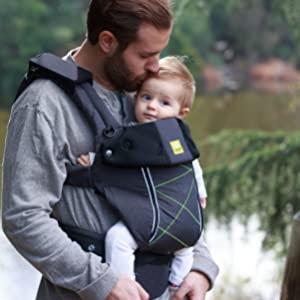
Wear them in a carrier when you want your hands to be free
Carriers are also beneficial to baby while they are facing outwards. You can entertain guest Now they can see, reach, grab, and hear so much going on around them. They’ll love taking in new sights while strapped right to mom or dad. Keep your baby facing you when when you are going out and want to keep strangers from touching and spreading illnesses to your baby.
Always keep a blanket or sheet with you
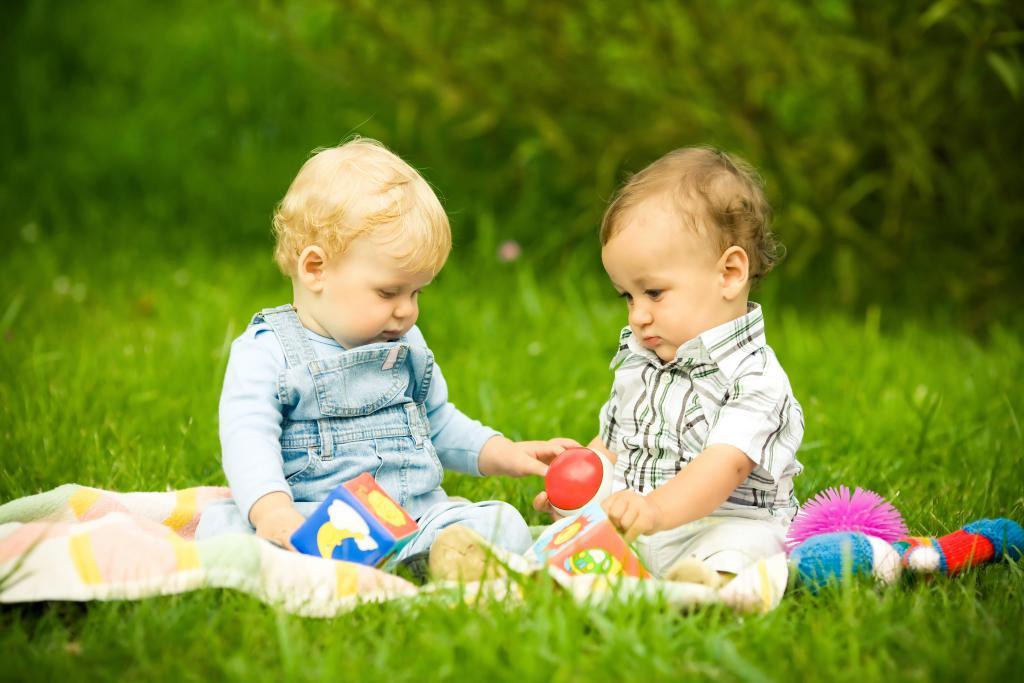
If you can’t bring a portable play yard with you, always remember to have a blanket on hand. Keep it in your car for anytime you end up making a quick stop at a park or friend’s house.
This way, if you’re sitting outside, you can put the baby down anywhere and not have to worry about dirt or heat. You can read them a book or have them play with other toys. A large sheet should be a great size for a baby who is crawling around.
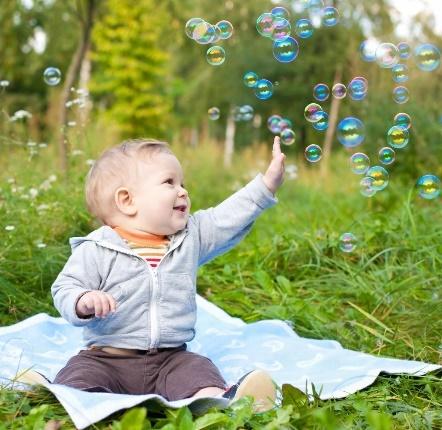
Flowers, plants, and animals offer sensory rich learning opportunities
Exploring Nature With Your Baby
NOV 08, 2012
From the first hour of life, when a baby stares into the eyes of his new parents, he is learning all about this brave new world. Babies try to make sense of what they see, touch, taste, grab, hear, hold, and squeeze. Think of a baby clutching a hunk of ripe banana, slowly squeezing it, and watching in wonder as the yellow, creamy fruit slithers between his fingers.
Babies are born primed to learn how the world of people and objects works. That is why they love exploring their outdoor surroundings. Every bug, animal, or bird that your baby sees is a brand-new experience — especially because babies spend so much time indoors. When at the park or in your yard, don't be surprised if your baby wants to touch a nice earthworm as she inspects the grass at the edge of her blanket. Many babies love to feel a caterpillar crawling on their arms.
Natural experiences should come in doses that are understandable for your baby and in ways that keep your baby safe, of course. Babies are forever exploring, whether trying to poke a finger into an electrical socket or attempting to tip over a stand so that they can pull at and maybe taste the shiny green leaves of a plant. Babies are often unaware of dangers, and toddlers can climb with agility and fearlessness into hazardous situations.
Opportunities to experience nature up close stimulate infant senses, provide a sense of loveliness for him to appreciate, and encourage you to label objects — flowers, plants, and animals — and to explain their characteristics using as many of the senses as you can.
Technology has made its way into every aspect of our lives. Children see less and less of nature and the outdoors and more and more of touchscreens and televisions. The following suggestions provide great ways for you and your child to safely experience the outdoors and will lead to rich learning experiences.
Observe animals in their natural habitat.
As you walk with your baby in a pack on your back, point out sounds she can listen to, such as a bird chirping or crow cawing at the top of a tree. Point out the insects crawling, the doggies running around sniffing, and the squirrels climbing up trees. As your baby begins to use some language, she may call your attention to a bird flying up and settling on a tree branch. Rejoice with her excitement. The world of animals and birds is a new kind of discovery for her.
Parent Info
Spying on Squirrels and More with Ranger Rick
For more about other animals, use theTreehugger Site
Encourage touching.
In the park or your backyard, you can introduce your baby to a great variety of nature's textures. Invite him to feel the grass and pinecones; to touch smooth, bumpy, and grainy textures.
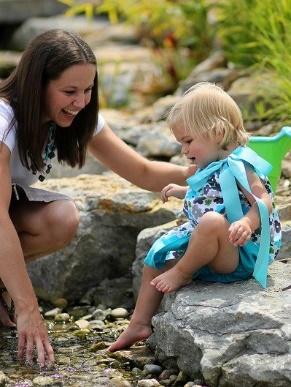
Explore a creek or river. Exploring a river, looking for water critters, catching tadpoles, finding special rocks or even arrowheads was a favorite pastime I shared with my Dad. Kids require little direction when it comes to this kind of fun. Give them a river, some water shoes and set them free.
Enjoy Bird Watching Together. Watch birds through binoculars, build a feeder or birdhouse, or just sit on the porch (or behind a window) or on a blanket and listen.
Try to guess which bird is singing that song. Explain male and female colors. In the spring, leave some scraps of material or yarn for the birds to find and use in making their nests. In the winter, drive through areas where there are trees to see the nests they have built.
Get Outside & Connect: Roll Down a Hill
Do you remember rolling down grassy hills as a child? I sure do. I remember rejoicing with my brothers and neighborhood friends whenever we found the perfect spot to go for a roll. We laughed, we squealed with joy, we connected with nature, and we helped our bodies develop properly. What could be better than that?
Children need to move and play outside on a regular basis in order to develop healthy sensory systems. Rolling down hills is a great way to get outside, connect, laugh, and have fun. It is also the perfect activity for the developing sensory system. Get outside and go for a roll down a hill today!
Play in the Leaves: Who doesn’t love jumping in a huge pile of leaves? I know its a fantastic way for the whole family to get involved
Jump in Puddles: I don’t know about you but just the simple act of jumping in puddles can be a blast for any kid. It is bound to bring on the smiles and the laughs, as well.
Feed Ducks Many duck species are as at home on the water as they are on land and in the air. Ducks have two unique features that make them such good swimmers—webbed feet and waterproof feathers. From whistles and coos to yodels and grunts, ducks have a lot of different things to say. If you're wondering what to feed a baby duck without starter feed, consider some fruits and vegetables: cut them very small.
For more about ducks and other animals, use the Treehugger Site
Start Nature Treasure Boxes:
Babies and toddlers usually really enjoy playing with random loose parts. You can make them a nature-themed bin full of all sorts of natural treasures for them to build and play with.
Consider filling a small tub with smaller containers that they need to open and explore and fill and empty. Think shells, pretty stones, pieces of driftwood, maybe some paint brushes and small scoops too.
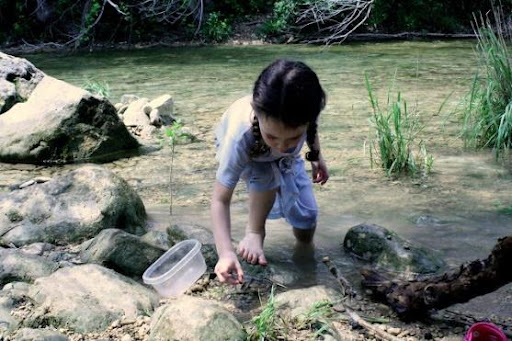
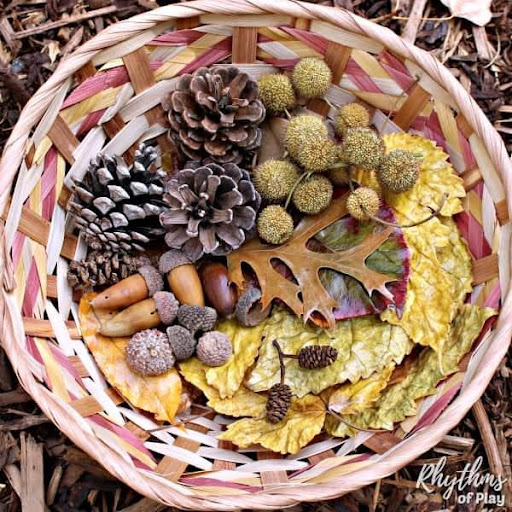
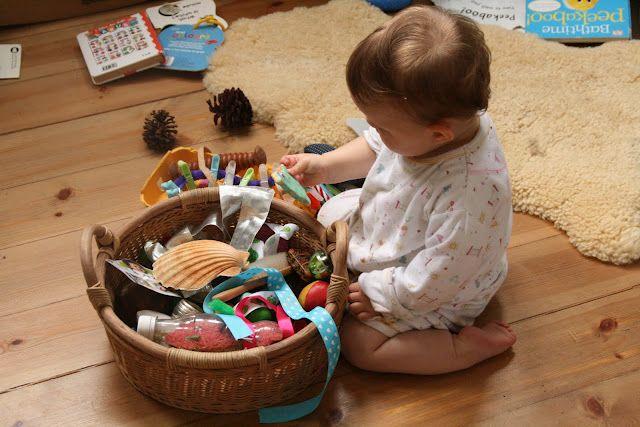
For an added task, give them some water to paint these treasures and watch how their colors and textures change.
Visit the zoo.
Wheel your stroller close to an exhibit and point out what your baby is looking at, whether it's a seal splashing in the water or a monkey swinging from a branch. You have been reading animal stories to your little one from early on. Now, at the zoo, he gets to see all those creatures that were in the storybooks. Let your toddler tell you that he is watching Horton the elephant lift up his trunk!
Stroll through a garden.
Flowers and plants offer your baby sensory and aesthetic pleasures. She will be sensitive to, and admiring of, the colors, sights, and sounds. Trees, flowers, and plants provide opportunities for talking about rough bark, delicate blossoms, and perfume smells. Some flowers are lovely to look at but don't have a smell when you sniff them. You can also pick up your baby to show her a butterfly nosing about to get nectar. (A butterfly bush in your garden will attract more of these beautiful "flying flowers!")
Create a garden sensory bin:
It was a great way for him to get a different perspective on everyday items from our backyard. With the garden sensory bin, he explored a lot of other things first, but then, it was time to SPLASH 🙂.
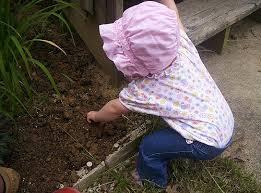
Numerous studies point to the benefits of spending time in nature. Regular exposure to nature reduces stress, increases physical and emotional well-being, and can even contribute to the development of empathy.
In the natural world, children can take risks and freely explore. They discover their physical limitations and potential.
They learn to slow down and observe the world, taking note of patterns and changes.
Urban areas present unique nature opportunities for families, such as mature landscaping, established parks, and community programs. Consider finding the hidden nature. Children are adept at finding nature in unexpected places. From the plants growing in sidewalk cracks to the bugs under rocks, take a cue from your child and challenge yourself to discover hidden beauty.
Not only will you nurture the love of nature in your children or grandchildren, but you will also strengthen your relationship with them through quality time spent together. Let nature be a foundation for wonderful memories that will be cherished and remembered long after you’re gone.
Introducing your child to all aspects of nature will help them with language development and will give her an appreciation for the needs of other creatures and a sense of pride at helping wildlife flourish.
Enjoy these experiences together!
SIMPLY OBSERVE THE WONDER OF THE NATURAL ENVIRONMENT!
Activities for babies don’t need to be complex or overly planned. After all, everything is a first experience for a baby! At this stage, when they are processing so much new information about the world, people, and objects around them, they interpret everything through the sensory motor system.

For this simple activity we took a rug outside and, together, laid down underneath some trees. I lay next to her and looked up and around to get a sense of her vantage point. How amazing to see things from a different perspective!
The light made some beautiful patterns through the leaves and branches of the trees around us, and nearby bushes and leaves swayed in the wind. These also made a lovely, calm sound and the whole setting was perfect for quiet observation together. Big sisters played around us while we lay there, and periodically brought over flowers, pinecones, and leaves that they had found which they really wanted to share with baby Bean!

We are on holiday now so these sights and sounds are different to those we would find back home in the garden or park in our big city. But even at home in the garden, the first experience of toes and fingers in the soft grass are not to be overlooked! How about feeling the damp sand at the beach or sand pit, trailing little fingers in water or over smooth pebbles, deliberately standing in the wind, going out at night to see how dark it is and look at the stars together!
They all lead to wonderful enrichment for little babies and are so valuable as a way to learn together about the world we live in.
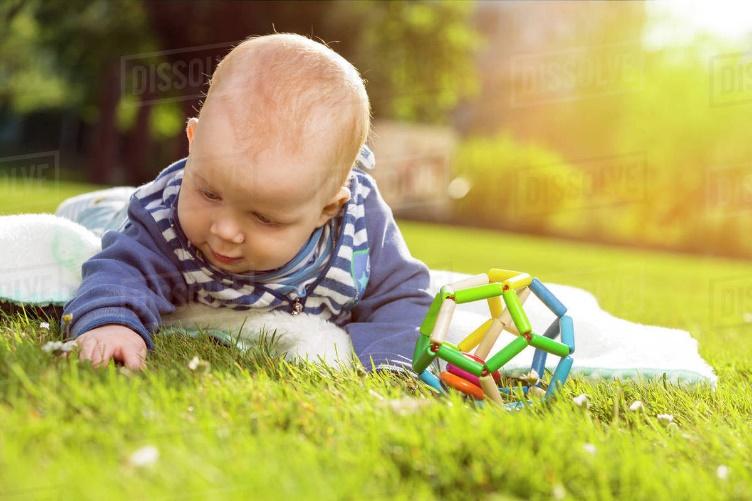
You can lay your babies on their belly on a blanket or sit them up on a blanket in the grass. Help them to explore their new environment by touching and feeling all the outdoor things:
grass
sand
pinecones
smooth rocks
rough rocks
twigs
flowers
Leaves
Just make sure you maintain close supervision, so they don’t put these items in their mouth. Also, start building language and vocabulary by talking to your baby about these things that they are seeing, hearing, and feeling.
Your baby is learning so much at this age and taking in everything you are telling him. Here are some ideas of ways to talk about the outside to your baby:
What they can feel:

a smooth rock
blades of grass
a crunchy or soft leaf
warm sun on their skin
the breeze and wind
the hot ground
What they can hear:
cars and trucks honking and driving by
birds chirping
wind from the trees
dogs barking
bugs buzzing
What they can see:
blue sky, green grass, yellow flowers
car, house, ball, bike
butterfly, birds, bugs
other animals and pets, people
Playing Safely Notes
Avoid Large Crowds
While it is fine to go out in the yard or to a quiet park, you'll want to try your best to avoid places where there are crowds for the first several weeks of your baby's life.
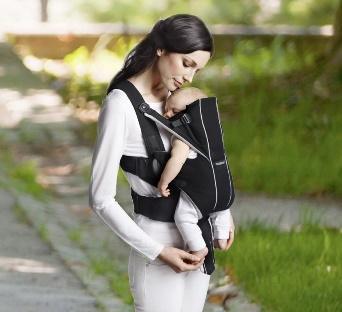
The younger she is, the more immature her immune system, and the more susceptible she is to pick up germs from other people and nearby coughs, sneezes, and unclean hands. Once your baby reaches 2 to 3 months, her immune system will mature significantly, and you won't need to be as concerned.
Babies are irresistible, which means strangers may want to touch and play with her—leaving you with less control over what she's exposed to. So, keep that in mind before you head to the mall or the local swimming pool. A good way to protect a baby from strangers' germ-filled hands is to wear baby in a sling or carrierfacing you. When friends and family want to hold your baby, insist that they wash their hands first.
When You Get Home
When you get home from an outing, be sure to wash your newborn's hands, especially if anyone has touched her. It would also be a great idea to wash your own hands, to avoid transferring anything from yourself to the baby. Some parents feel better giving their baby a bath after coming home from excursions, especially shopping trips to the grocery store or mall where the baby may have been exposed to germs.

Protect Your Baby from the Elements
Whether it is winter or summer, facing the elements without the right protection is never a good idea. Here's what you need to know for the different seasons of the year.
In Winter
It is perfectly safe to take the baby outside in the winter, provided she is bundled up properly (as discussed above), the temperature isn't too cold, and you keep the trip brief. Sometimes babies need a few gasps of fresh air and natural light, especially if they are colicky.
Use caution in cold weather. Babies are at an increased risk of hypothermia, due to their still-developing nervous system, minimal amount of subcutaneous fat, and an inability to shiver to bring up their body temperature. If the weather is freezing outside, you may still take the baby out for quick trips out, provided the wind chill factor is above 20°F. Do not stay out for longer than a few minutes.
In Spring
Spring is a wonderful time of year to have a newborn. Winter's cold has started to thaw, and the days are getting longer. This is an ideal time to enjoy a walk or trip to the playground with older kids.
Spring days can be deceptive though. A bright and clear day can quickly give way to gusts of wintry air, or a sudden rain shower. Always check the weather before taking the baby out in the spring and be prepared with an umbrella for the stroller, extra blankets, and a change of clothes in case you get caught in an unexpected downpour.
In Summer
In summer, you want to protect your baby from the sun, excessive heat, and mosquitoes. On hot summer days, try to avoid going on in the heat of the day, and instead try to time outdoor activities for the morning or late afternoon. If the thermometer reaches 80°F, head inside.
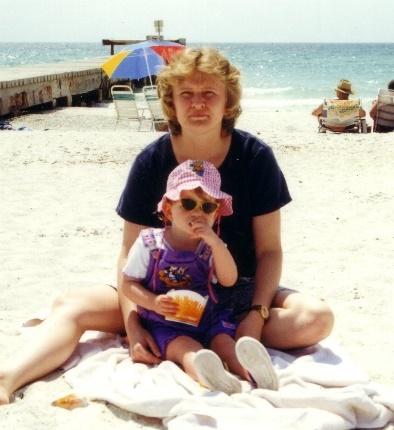
Babies under 6 months of age should never use sunscreen, so you'll need to keep the baby in the shade and use a sun hat. When taking a walk or going to the park, use a stroller with shade and check to make sure the baby isn't in direct sunlight at any time.
If your area has a lot of mosquitoes, you may want to use a mesh net to cover the stroller or pack-n-play in the back yard but be sure the mesh is away from your baby's face.
In Fall
Just like springtime, autumn can be a great time to have a baby. The temperature is moderate, with lots of sunny days and colorful leaves to enjoy. However, the weather can change quickly on fall days as well.
In early fall, chilly mornings can give way to summer-like afternoons, while in late autumn, bright sunny days can have a deceptive winter chill. Layering is key in fall weather, so be sure to have extra blankets with you to keep your newborn warm outdoors.
It’s important for your baby to experience different environments. And if you’re feeling cooped up indoors, it’s time to get outside!
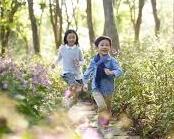
Going for a walk is easy, but what else can you do to help your baby safely explore the outdoors, even amidst Take a look at these seven ideas.
Observe the natural world.
Wherever you happen to be — your yard, a park, or another outdoor location — you’re sure to be surrounded by many different plants, animals, insects, and more. As you walk around (or sit and observe), hold your baby or place him or her in a carrier in a way that makes it easy to look around. Go out in different types of weather, too (dressed appropriately, of course). This will help your baby experience changes in the environment — sometimes it’s sunny and warm, other times it’s cloudy and cool.
Talk about what you see.
Point out everything you see, and call things by name. When you see a flower, point to it and say, “flower!” Your baby probably isn’t old enough to say the words you’re saying, but he or she will begin to associate objects with their names. Spark their interest using three of the senses as you draw their attention towards the world about them.
Explore different textures.
When you’re outside, there are so many different things to touch, from smooth rocks and flower petals to coarse gravel and rough sand. Help your baby (safely) explore these textures to get a feel for the properties of different objects.
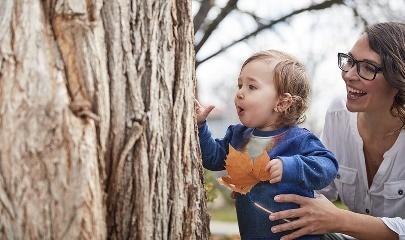
Change the scenery on your walks.
If you go on a daily — or weekly — walk, consider stepping out of your comfort zone. If you normally walk around your own neighborhood, branch out to a local park, garden, or zoo. Your baby will have a whole new set of things to look at — a variety of plants, interesting animals, and more. Just make sure to bring your own mask along, and maintain a safe distance from other people at all times.
Discover your own backyard.
Take a blanket outside and lie in the grass with your baby, or set your baby up to watch you plant a garden. If you already have a garden, walk around with your baby, smell the flowers, look at the different plants, and observe the insects that might be around them (take care, though, to stay away from bees, wasps, and the like).
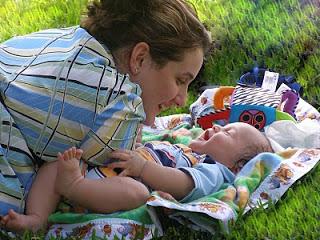
Have an outdoor picnic.
You can do this in your own backyard, too, or you can venture out to a park, the beach, or anywhere else you can comfortably lay a blanket down outside while also keeping your distance from other people. Sit together and look around at everything around you as you eat.
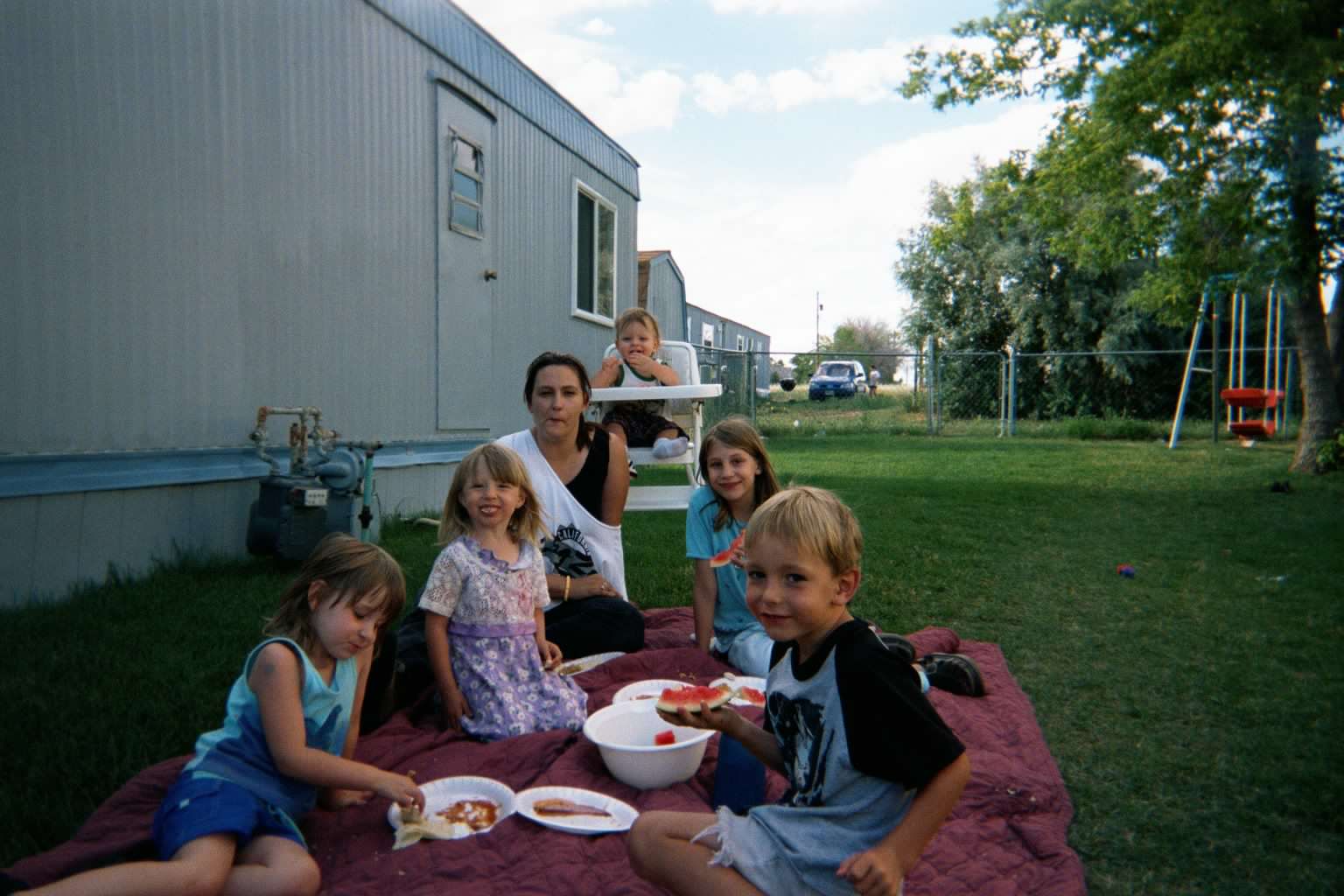
Set up water play. 12 Ideas for Baby Waterplay
Messier activities, like water play, can be fun to take outside. Grab some plastic cups, balls, utensils, sponges, and other fun, waterproof objects — making sure, of course, that nothing is a choking hazard. Fill a bowl, bin, pail, or kiddie pool with water, and help your baby play with the different objects…fill them up and empty them, see what floats and what sinks, and more. And be sure to supervise your little one at all times.
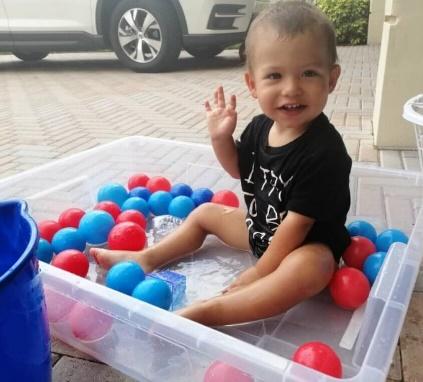
Whether you head to a local park or go out in your own backyard, it’s important to get outside with your baby. And the activities you do together can be simple!
BABIES EXPLORING AND ENJOYING OUTDOORS

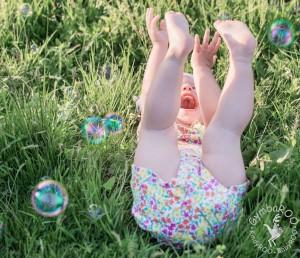
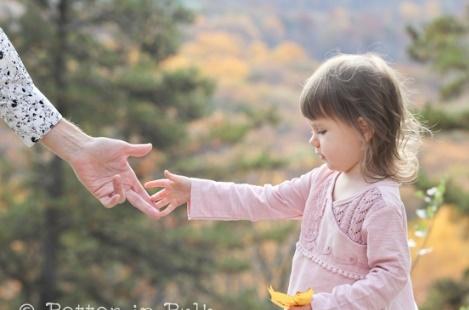
Being outside is probably a totally new experience for your infant, especially if they were born this past winter or fall and haven’t been outside yet.
Don’t be afraid to let them get a little dirty! They wash up just fine.
Walks are great for both parents and babies. You both need the fresh air if you’ve been cooped up in the house too long. Pop your baby in a stroller or carrier and take them out to enjoy the sights.
Make sure you point out all the things they will be seeing while outside. From houses and cars to trees and birds, your little one is taking in all of his surroundings. Even though he may not be speaking just yet, he is still understanding a lot more than you may think.
The best way for your baby to learn new vocabulary and language is to see the real world that we live in.
Here are some ideas for walks you can bring your baby on:
Go to the farmers market and point out the fruit and vegetables
Hiking trails and point out the plants and animals
A park with paths and point out other people, kids, and playgrounds
Outdoor mall or shopping center and point out people and shopping items
Walk the boardwalk and point out the ocean, sand, and birds
Trails around a lake or reservoir and point out the ducks and water
Outdoor Play
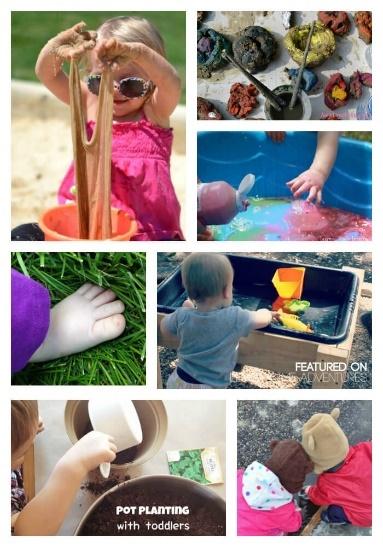
5 Ideas for Playing Outdoors with a Baby –
Barefeet on the Dashboard
Bubbles With Baby Pink Oatmeal
Outdoor Sensory Play for Baby ~ The Realistic Mama
Bubbles and Color in the Play Pool ~ Learn Play Imagine
Exploring Puddles ~ Bambini Travel
Container Planting ~ Bambine Travel
15 Ways to Play Outdoors with Babies ~
Angelique Felix
Sand Slime ~ Growing a Jeweled Rose
10 ways your little one is learning as you explore and walk…
In the snuggly, your newborn will feel your heart rate increase as you walk briskly, fondly reminding her of that time not so long ago when she was so closely connected to you in every way. She’ll love the sensory input of your heartbeat.
Babies really enjoy looking at all the new sights when you go outside – everything is different! The colors, the movement, the moving light. It’s a whole new world visually!
As you walk your baby using a snuggly or infant carrier, they’ll enjoy the rhythm of your movements. This vestibular input helps coordinate movement between the eyes, head and body, helping your baby develop a sense of balance and visual-spacial perception.
When we go outside, the big, open air just feels different and elicits interest as your baby looks around and takes it all in. It’s old hat to you, the smell of rain or someone grilling in the backyard. But for your baby, it may be their first time to ever experience that!
Sounds are totally different outside. Cars going by, birds chirping, airplanes, dogs barking, lawnmowers – all these sounds give you a chance to talk to your baby and give words to describe what they’re hearing. “Do you hear Cooper barking? I think he hears us walking by on the sidewalk. He’s saying hello!” As you narrate what your baby is experiencing, you’re helping with language development.
Neural connections are different when we go outside. Sensory stimulation is less rapid, more fluid, allowing a ‘pause’ of sorts. This enhances brain development and can even affect a child’s behavior (see reference below)
Toddlers and older children who walk on their own have lots of chances to discover and learn as they walk around the block. There’s countless opportunities for physical development as they walk keeping rhythm with your steps, jump over cracks on the sidewalk, run ahead, hop instead of walk and all the other beautiful ways children naturally “practice” their emerging physical skills.
And of course, as they walk, they’ll stop to look at bugs and other critters along the way, picking up sticks and other stuff, smelling flowers, noticing patterns along the way. All these ‘treasures’ support math and science in a spontaneous, self-discovery method of learning.
Walking with your child is not a fast process, like the brisk walk you take to get a little exercise. Slow down, allowing time to inspect storm drains, weeds in sidewalk cracks and other fascinating things along the way. This natural intellectual curiosity is how your child takes in new information and draws conclusions about the world. Allow lots of time for pauses along the way.
Prepare a Baby-Safe Backyard for Family Fun
How to Baby Proof Your Yard
You’ll want to begin, of course, by making your backyard space as safe as possible. Remove obstructions and lock up or fence off swimming pools, lawn equipment, poisonous plants, and other hazards. Make sure railings and gates on balconies, porches, and decks are both sturdy and up to date—slats should be less than 3.5 inches apart or covered with a strong mesh or another safety device. Then add a few low-cost, high-engagement items, inspired by the ideas here, to create a kid-friendly zone for your outdoor explorer. Try one or two suggestions to start, and then switch it up occasionally, depending on your child’s mood, the weather, your time, and budget.
Stimulate your babies and toddlers with these outdoor ideas for Learning through Landscapes…
Young children have an innate urge to learn about the world around them, and the outdoors offers a never-ending range of exciting opportunities. They can satisfy their love of movement when outside, improving muscle strength, lung capacity and bone density along the way, as well as developing important physical skills such as coordination. A rich outdoor environment offers the chance to explore and investigate, as well as encourages language and communication skills.
From the minute you open the doors or start the ritual of finding the correct clothing and footwear, babies, and toddlers’ sense that change – and the potential for adventure – is in the air, so make the most of their enthusiasm by developing your outside space…
Stimulating senses
Babies are highly responsive to outdoor stimuli. Sound moves in a different way outside – changing naturally with the wind or variations in air pressure. Until they’re about six months old, babies can differentiate sounds much more effectively than adults; they’re much more receptive to bird sounds, for instance, and as a result they’ll love being outdoors. Light also behaves differently. It’s changed by the weather, filtered by trees and alters throughout the day. Visit spaces near trees or create a place where voile or chiffon can hang – this will filter the sun and move with touch or the wind.
Smell and taste can also be stimulated outdoors. Babies on the move make the most of any opportunity to pull themselves up to standing. An effective way to encourage this behavior while offering exciting sensory experiences is to install sturdy low-level planters filled with strongly scented herbs such as lavender or rosemary, colorful summer plants or edibles like strawberries or redcurrants.
And don’t forget touch – another key sense for helping babies to learn about the world. Outdoors, they can lie on the grass and feel it tickling their skin or experience the textural differences between hard and soft surfaces.
Tailored for toddlers
Once babies are toddling, they’ll benefit from varied landscapes. Small hills, tunnels and trails encourage activities such as crawling, rolling, stretching, and running. Tires, ladders, stumps, and planks provide opportunities for climbing, and low walls and rails at various heights allow babies to pull themselves up to standing. Textured pathways (bark, wood chip, gravel, pebbles) not only add visual interest but also sharpen the mobility skills required for managing uneven ground.
Natural materials such as sand and soil provide fantastic opportunities for exploration, investigation, and manipulation. Smaller sandpits offer great opportunities for digging, while larger areas of sand allow toddlers to use their entire bodies to feel the texture. Children can extend their play to a digging area filled with soil. Here they can pretend to plant and dig up vegetables (try providing onions or potatoes for this activity).
Water is fascinating for young children due to sounds that can be created with it and because it causes reflection. It also presents an opportunity for them to explore the qualities of the above materials, by mixing – and getting grubby! Also think about resources that support exploration of the weather, such as streamers, windsocks, umbrellas, and wind chimes.
Tip: Nooks and crannies will entice crawling and toddling youngsters, so try creating natural dens under low-hanging branches. Alternatively, supply large cardboard boxes or lengths of fabric attached to fences. Cushions and blankets help create cozy nooks for snuggling into with adults and other children for stories, songs and games. Adding interesting items such as mirrors, fir cones, sponges, large buttons, toy animals, etc. will stimulate exploration and conversation.
Learning through Landscapes offers a range of services to support outdoor learning and play in the early years. Its membership resources and publications provide a regular supply of fresh activity ideas, and it offers on-site support through advisory visits and half-day, full-day or twilight training sessions for nurseries.
You may also be interested in...
Some easy economical solutions for outside play rooms
-Made with love

The primary thing you need outside is shelter from the sun. And I even I could make this one on my own.






























































